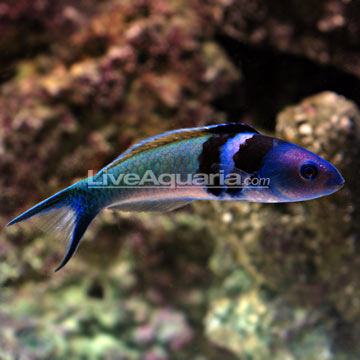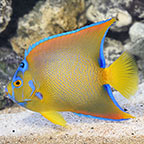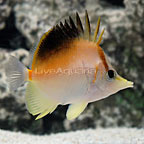
Additional locales and sizes may be available!
Additional locales and sizes may be available! Email me when availableQuick Stats
What do these Quick Stats mean? Click here for more information
What do these Quick Stats mean? Click here for more information
Overview
The Bluehead Wrasse should be housed in a 75 gallon or larger aquarium with plenty of live rocks for hiding and a sandy substrate to burrow into at night. Larger, gregarious tankmates are recommended since the Bluehead Wrasse will demonstrate territorial behavior and harass new additions to the aquarium. If possible, the Bluehead Wrasse should be the last fish added to the aquarium. The Bluehead Wrasse is a carnivore whose natural diet consists of fish, crustaceans, motile invertebrates, and worms. As such, the Bluehead Wrasse may eat unwanted mantis shrimp or bristleworms in the aquarium. The Bluehead Wrasses does not eat corals or macroalgae.
The Bluehead Wrasse diet should include vitamin enriched frozen mysis shrimp, vitamin enriched frozen brine shrimp, and other meaty foods along with a high quality marine flake and marine pellet food.
Approximate Purchase Size: Male Small: 1" to 2"; Medium: 2" to 3-1/2"; Large: 3-1/2" to 5-1/2"













